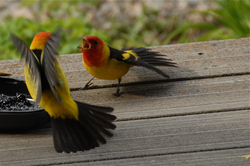 feeding frenzy with orioles, tanagers, hummingbirds, and grosbeaks going at the feeders and at each other in order to get to the feeders. The action was intense and dizzying to watch.
feeding frenzy with orioles, tanagers, hummingbirds, and grosbeaks going at the feeders and at each other in order to get to the feeders. The action was intense and dizzying to watch.The adult male Western Tanager in breeding plumage, with his showy yellow and black feathers and bright red head, is my pick for the prettiest bird to frequent the ranch (see previous blog entry "Bird Beauties.."- May, 2009).
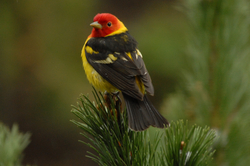
Some of the males in this flock were either sub-adults or had not yet attained their full breeding plumage; they appeared yellow-olive and dusky, with just a wash of red on the face.
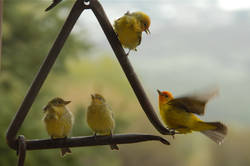
The females display olive-green feathers on their upperparts, and yellow to grayish white feathers on their underparts. Both male and females wear two yellowish-white wing bars.
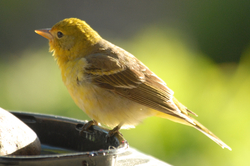
In addition to the tanagers, a number of Black-headed Grosbeaks made a post-storm appearance at the feeders. Like the male Bullock's Oriole, the male Black-headed Grosbeak's plumage sports orange, black, and white, but the orange of the grosbeak is darker than the oriole, and its beak is heavy and bulky, compared to the narrow, straight oriole bill.
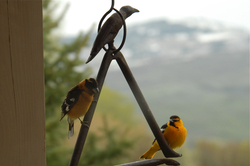
(Black-headed Grosbeak on left, Bullock's Oriole on the right)
The Black-headed Grosbeaks usually comes to the sunflower feeders, but the last few days,
they have been competing with the tanagers and the orioles for the nectar, oranges, and grape jelly.
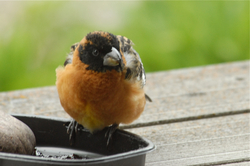
It is no wonder I have trouble getting anything accomplished in the spring. I am either distracted by the amazing display of flashy birds at my feeder or occupied with replenishing the feeders that these flashy birds are frequenting. How fortunate can one bird-loving person be?!
In a few days the Western Tanagers and Black-headed Grosbeaks will move to higher grounds to nest. In the meantime, I'm enjoying every minute of their visit to our ranch.
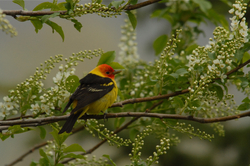
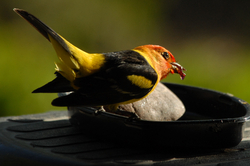
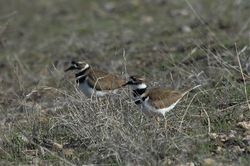
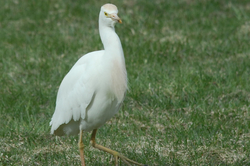
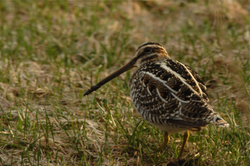
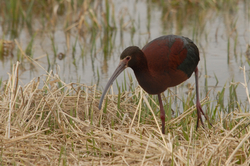
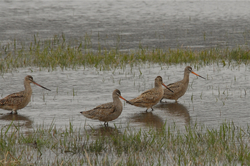
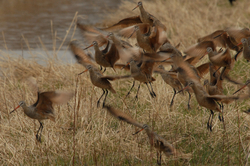
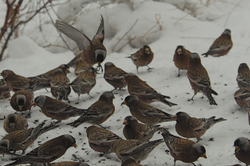
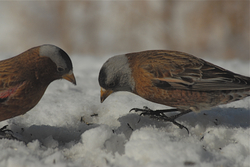
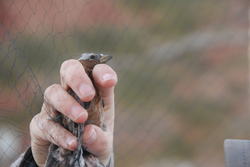
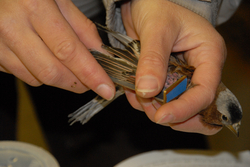
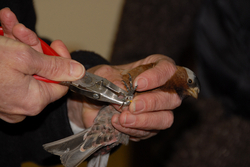
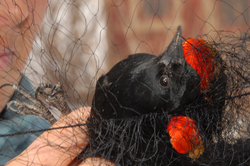

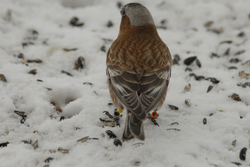
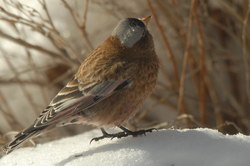
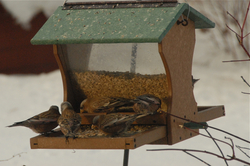
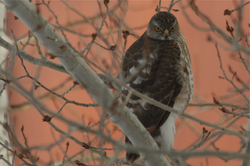
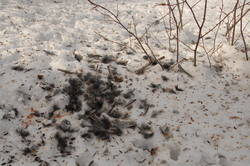
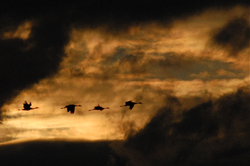
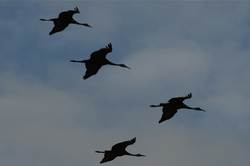
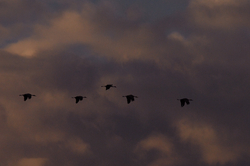

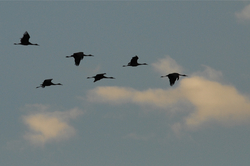
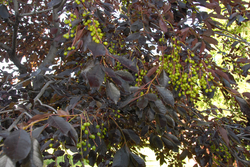
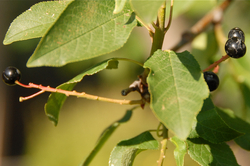
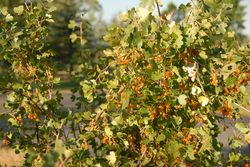
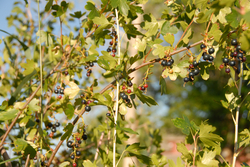
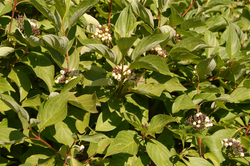
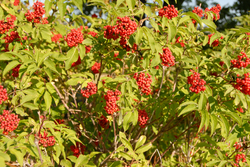
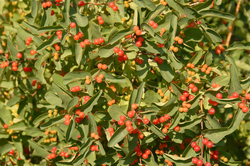
-thumb-250x166.jpg)
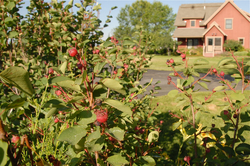
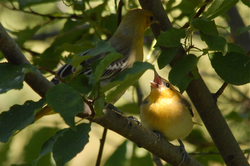
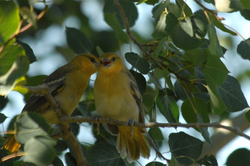
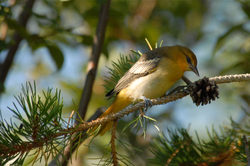

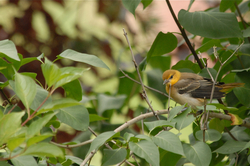
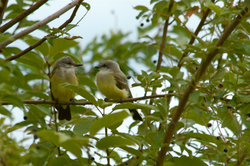
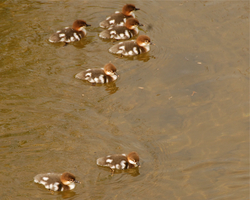
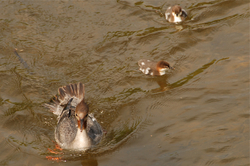
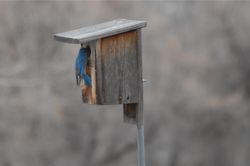
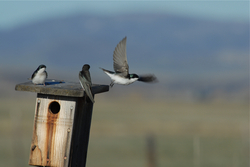
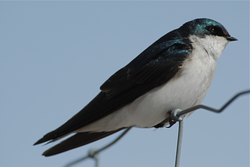
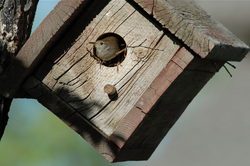
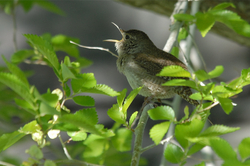
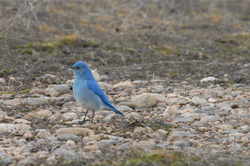
-thumb-250x167.jpg)
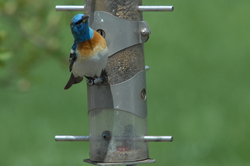
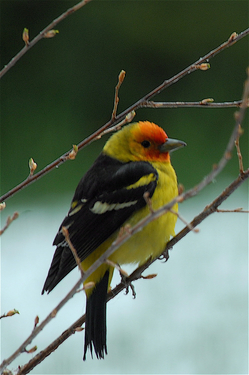
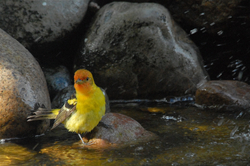











Recent Comments